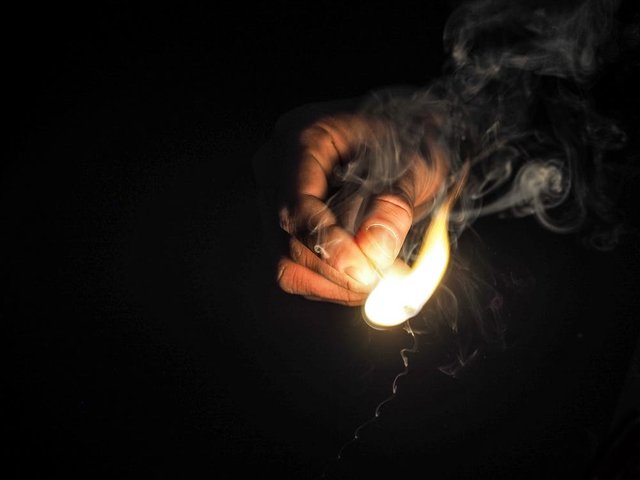Chapter Eight: Token Burns; another way to avoid Howey.
In our last chapters we've went through means to avoid the Howey test (Sec v. Howey Co, 328 US 293 (1946)). This means that we attempted to shape our new token as something which is not an investment agreement or a security.
In this chapter we'll cover "burns"; when you use this method, you usually mean that any use of the token (or currency, whatever) will actually burn it, therefore making the total availability of tokens lower and driving the demand up. Usually, when you read an ICO whitepaper, they describe that the reason for the potential increase in their token's prices is that such tokens are of limited supply, and when demand goes up, the price goes up as well.
However, in a proof-of-burn, the method is different. Here, any use does not mean that the owners of the network get the tokens back, but that they are actually losing the ability to use these tokens.
This might be good in a case where there is not just limited supply, but also a limited supply of what the token represents. For example, if one hjir token represents one gallon of organic, natural, free-range water, and the total water supply in the reservoir is one billion gallons, then the use of a token to use and purchase these waters means that there is one less gallon of water.
Now, we don't actually expect that the price of water will increase over time. Even if the entire water in this reservoir will be sold, there will be no effect on the actual price. This means that when you purchase these tokens, you are actually purchasing a future product as a pre-sale.
You know that there will be no future issuances of additional waters under this token, but you also know that this is really a lousy investment. Unless these waters have a unique collector's value, then there is no reason to invest in this pre-sale.
However, some previous ICOs conditioned their issuance of tokens not by receiving payments, but by actually burning other currencies. When Counterparty, another cryptocurrency, was created, the creators decided that a proof of burn will bring value to the system. When people want to receive these tokens, they'll have to destroy their existing bitcoins.
The problem with this, is that a proof-of-burn still requires an "investment of money". Meaning, the person who burns the coins for other coins still loses money, even though he does not pay the issuer money. This means that in order to reduce the possibility that a proof-of-burn ICO will be defined as a security issuance, we need to remove one of the other pillars of the Howey test.
Which one? Well, the easiest one to avoid is the expectation of profit. Meaning, that in order for a proof of burn ICO to avoid the Howey test, it needs to be one that does not generate a profit for people who purchase these tokens. How is this, theoretically, possible? well, it is possible but not profitable as an ICO (unless you retain a portion of these tokens prior to distribution).
Let's go back to the theoretical Hjir token, one gallon of water, one billion tokens, one billion gallons. If I want to make a hefty profit, I provide only 200 million tokens to the people who do the proof-of-burn. Then, later, after I finish the presale of these tokens, I still hold 800 million tokens, which are valued according to the burned tokens. If the "buyers" burned 1BTC for every 1,000,000 gallons of water, then my remainder has a great value.
Now, if we go to a more decentralized solution, then issuing X tokens at a proof-of-burn presale and then distributing additional tokens by mining them with another method of proof-of-work (not proof of stake, which might be considered as an interest on the token) might be also a way to still issue and maintain a profit.
Now, let's move on to a simple case study. TigoCTM is a company that manufactures the X-Coin machine, an automatic teller machine for bitcoin vending. TigoCTM recently took a token presale event. Their token, sold at the presale, allows people to purchase future goods from TigoCTM. According to their whitepaper, when using the tokens they are burned, not sold, and when the limited supply of tokens runs out, and as TigoTCM points out: "It is expected that 100% of the XCM will eventually be burned, so the supply will trend toward 0 (zero) over time. No explicit expiration date will be enforced, but users are warned that TigoCTM will not take inevitable US Dollar inflation into account, and therefore, the $10 face value will have less purchasing power in years to come".
The way to make some profit from the TigoTCM issuance was to buy early and receive their discounts on tokens. However, in such case, users take the risk that the ICO will fail, and that their investment (actually, purchase), will fail as well and they will lose their money.
Is this a security? well, the presale itself might not be a classic proof-of-burn. People actually buy these tokens. However, the use of the tokens does require burning, and therefore confirming the limited resource.
In our next chapter we'll discuss limited supply; or what makes the value of a token actually higher over time.
I'm Jonathan Klinger, I'm a master of law, certified to practice in Israel. I've explored the blockchain, and now I'll be helping you in deciding on whether you should raise funds via a token generating event. I highly recommend you avoid it. Read my blog for more info.
Previous Chapters:
Preface
Chapter One: Other People's Money, an Introduction.
Chapter Two: Scams, or why do we need investor protection?
Chapter Three: The Investors, or who doesn't need protection.
Chapter Four: What is a security, or: the Howey test, simplified.
Chapter Five: Avoiding the Howey Test.
